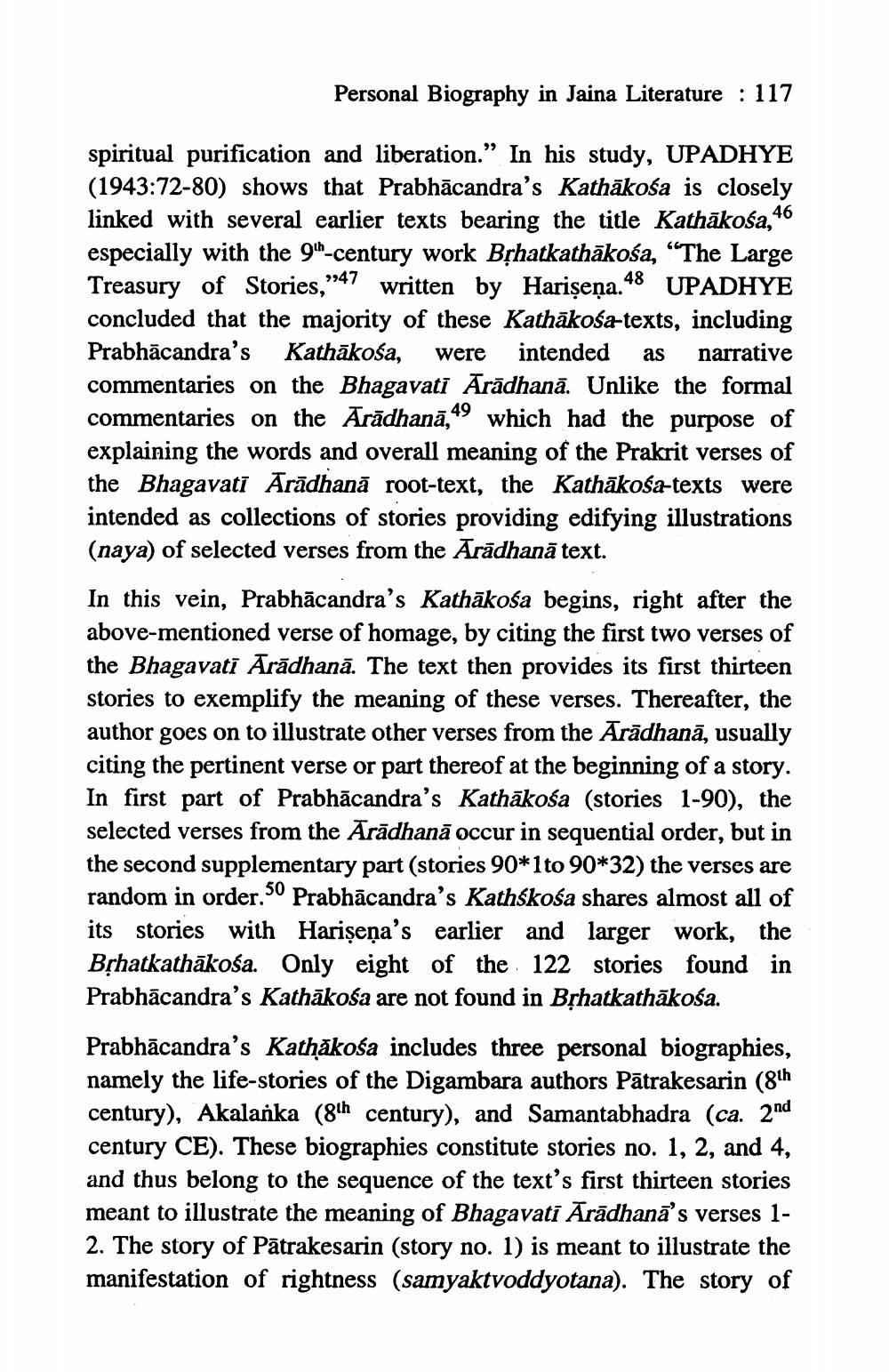________________
Personal Biography in Jaina Literature : 117
46
spiritual purification and liberation." In his study, UPADHYE (1943:72-80) shows that Prabhācandra's Kathakośa is closely linked with several earlier texts bearing the title Kathākośa,+ especially with the 9th-century work Bṛhatkathakośa, "The Large Treasury of Stories,"47 written by Hariṣena." UPADHYE concluded that the majority of these Kathakośa-texts, including Prabhācandra's Kathākośa, were intended as narrative commentaries on the Bhagavatī Ārādhanā. Unlike the formal commentaries on the Aradhana,49 which had the purpose of explaining the words and overall meaning of the Prakrit verses of the Bhagavati Aradhana root-text, the Kathakośa-texts were intended as collections of stories providing edifying illustrations (naya) of selected verses from the Aradhana text.
48
In this vein, Prabhācandra's Kathakośa begins, right after the above-mentioned verse of homage, by citing the first two verses of the Bhagavati Ārādhanā. The text then provides its first thirteen stories to exemplify the meaning of these verses. Thereafter, the author goes on to illustrate other verses from the Ārādhanā, usually citing the pertinent verse or part thereof at the beginning of a story. In first part of Prabhācandra's Kathakośa (stories 1-90), the selected verses from the Ārādhană occur in sequential order, but in the second supplementary part (stories 90*1 to 90*32) the verses are random in order.50 Prabhācandra's Kathśkośa shares almost all of its stories with Hariṣena's earlier and larger work, the Bṛhatkathākośa. Only eight of the 122 stories found in Prabhācandra's Kathakosa are not found in Bṛhatkathākośa.
Prabhācandra's Kathakośa includes three personal biographies, namely the life-stories of the Digambara authors Patrakesarin (8th century), Akalanka (8th century), and Samantabhadra (ca. 2nd century CE). These biographies constitute stories no. 1, 2, and 4, and thus belong to the sequence of the text's first thirteen stories meant to illustrate the meaning of Bhagavati Ārādhana's verses 12. The story of Patrakesarin (story no. 1) is meant to illustrate the manifestation of rightness (samyaktvoddyotana). The story of




